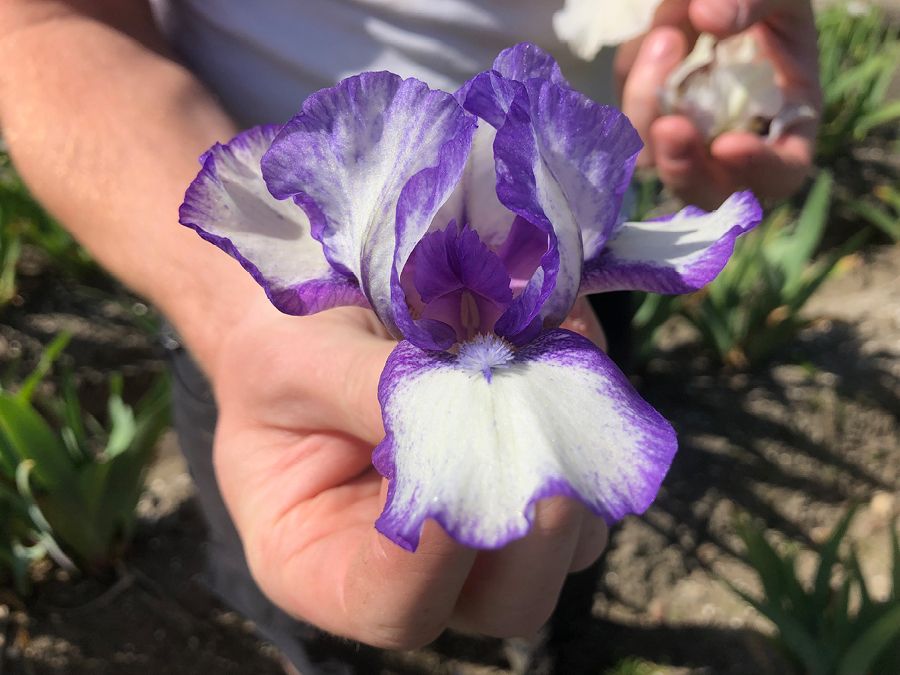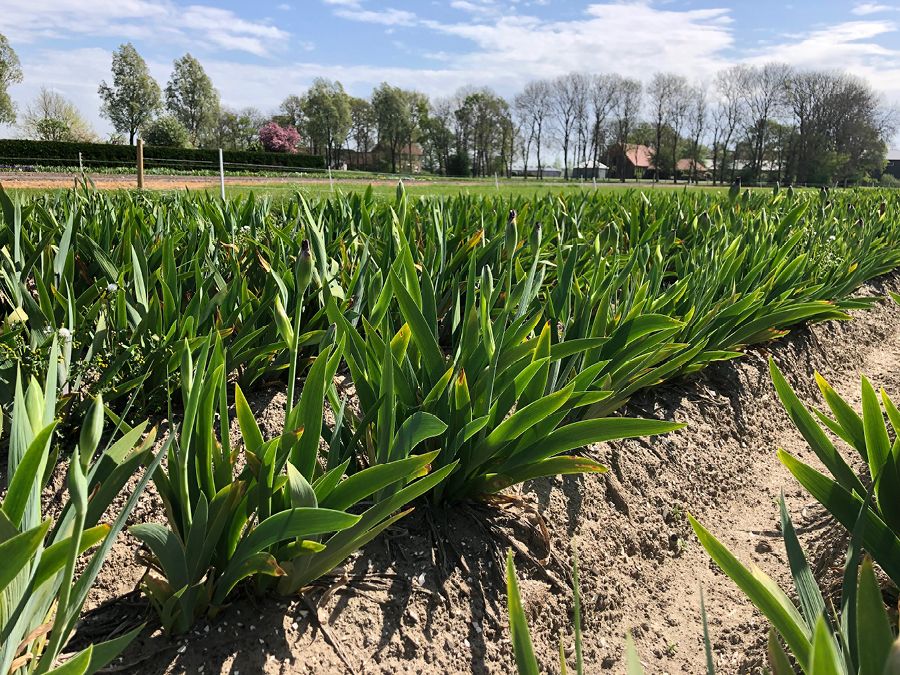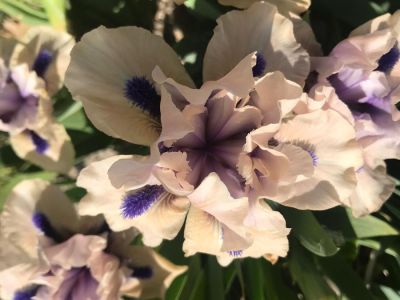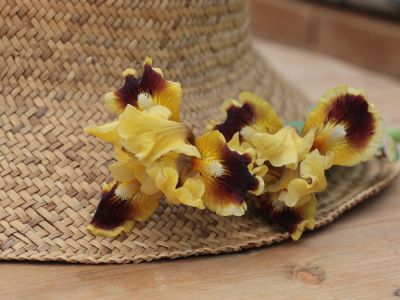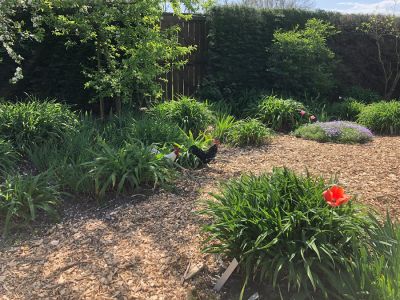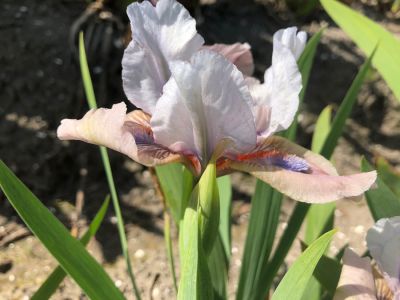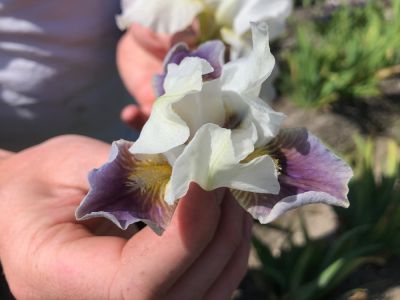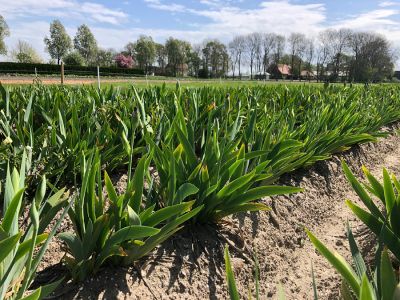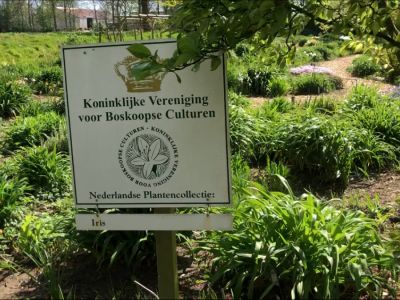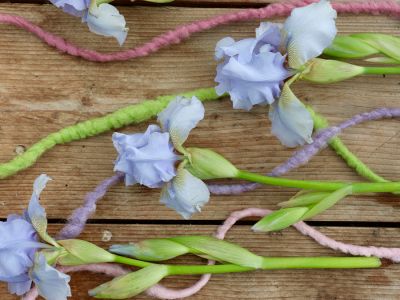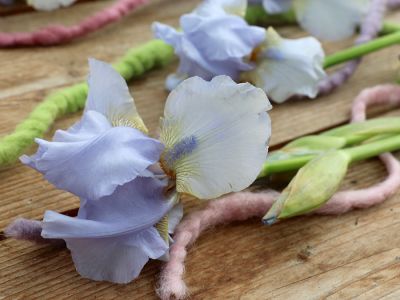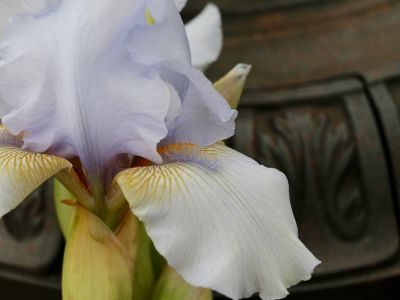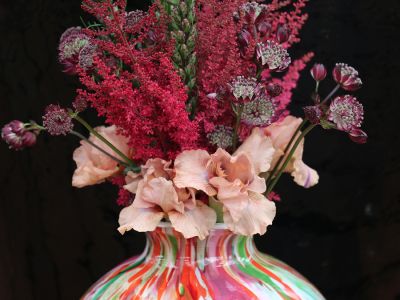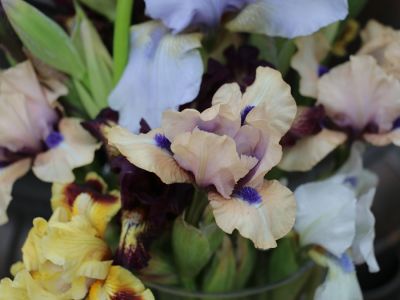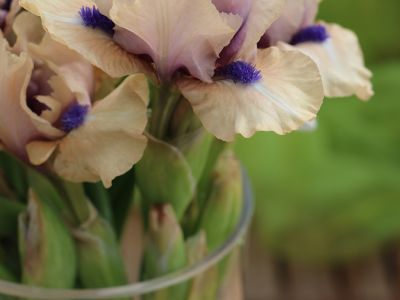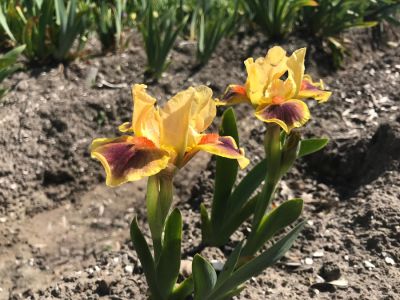Iris Germanica
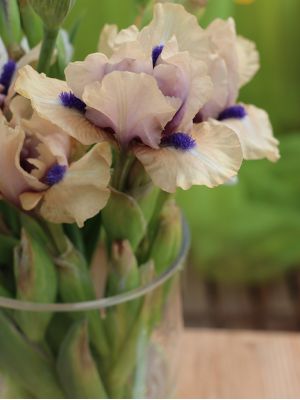
Calendar
In the spotlights
"A hobby that got out of hand" is how Erwin Joosten from Iris nursery Joosten describes the nursery. He runs the company together with his parents. His mother started the nursery about 30 years ago when she was able to take over a collection from a connoisseur. She started with 30 different varieties, but since then a beautiful garden has emerged where more than 900 species of Iris germanica can be found.
Bearded Iris
Iris germanica is also called the "bearded iris" because of the beard that grows on the lower leaves. This beard consists of pollen stamen intended to attract bumblebees. The Irises are originally from the Mediterranean and are quite common in France. The Iris often has several flower buds on one stem, but once the flowers are open they do not flower very long. It is therefore an extra special product, because it shows itself so shortly. Naturally there are irises without beard, but then it’s not a real bearded iris. It’s easy to tell; you can see the beard quite clearly on the photos!
Different flowering
The Iris germanica for cut cultivation blooms in May for a period of three to five weeks, after which the season is finished for the year. The weather has a major impact on the exact flowering period of the product. Every day during this five week period, a different product is cut and put on the market. It is therefore an impossible task to put just one product in the spotlight! That is why we show an wide assortment of the Iris on the photos.
900 varieties
How come there are as many as 900 different varieties? These days, the Iris germanica may not be used for breeding much anymore, but in the past they certainly did! Especially in America, money was invested to upgrade this beautiful product. Yet it was mainly the hobbyists who managed to breed 900 different varieties. The Joosten family has started collecting them and has a beautiful collection in their nursery. This collection also falls under the Royal Association for Cultures Boskoop. This association deals with the inspection and registration of new varieties of flowers and plants.
Special colors
The Iris germanica has very special colors. There are bright and clear colors that fit into every bouquet, but there are also flowers that have "pastel shades" and therefore have a very "chic" appearance. They are perfect for wedding bouquets or special corsages. The product is so eccentric with its own unique shape and with that colored beard; every florist can make something beautiful with that!

The cultivation
When you drive to the Joosten nursery you can imagine being in a different world for just a moment, seeing long fields with beautiful flowers. The tulips flower just before the Iris germanica, so the trip to the nursery was a nice outing for us driving through those beautiful fields. Although the Iris germanica blooms right after the tulips, several (shorter) Iris varieties are already flowering at the same time or towards the end of the tulip bloom.
Plant growing and cut flower growing
The nursery consists of two different parts. Approximately 2 hectares of land is available for growing a limited number of Iris varieties in larger quantities meant for the cut flower market. The second part of the nursery, approximately 2400 square meters, is meant for Iris plants. This part is actually the nursery’s core business; the Iris plants. Growing cut flowers remains a challenge because not all flowers bloom simultaneously. Moreover, the nursery is not close to one of the auctions, so arranging transport is always a puzzle. Making a whole trip for just one bucket of flowers is of course not profitable.
Difficult product for sale
The Iris germanica is a challenging flower to produce, but equally challenging to sell. The product is only on the market for a very short period of time and every day a different variety will flower and be cut. It is impossible to tell in advance which variety will be available on what day, and that makes it very hard to sell.
Unlike the normal Iris, the Iris plant is a root plant. It absolutely does not like water and is therefore placed on ridges so that the water can drain better. The Iris plant also likes a lot of sun and a lime-rich soil. Fortunately, the fields at the nursery are extremely suitable for this. The tubers are harvested after flowering and the old tubers are discarded. The newly formed tubers are sold or planted again. Tubers normally bloom every year but it takes two years to produce stems that are good enough for cutting.
Selection process
The very first flowers that come from the early plants are not suitable for sale because they are simply too small and too short . These flowers look beautiful blooming in the garden, but unfortunately cannot be sold. It is a difficult selection process to see which of the 900 varieties are suitable for cut flower cultivation., something the grower is working on right at this moment. Thankfully we have already received a beautiful assortment of Germanica's from grower Joosten to be photographed.
FloraPodium, 9 May 2019









